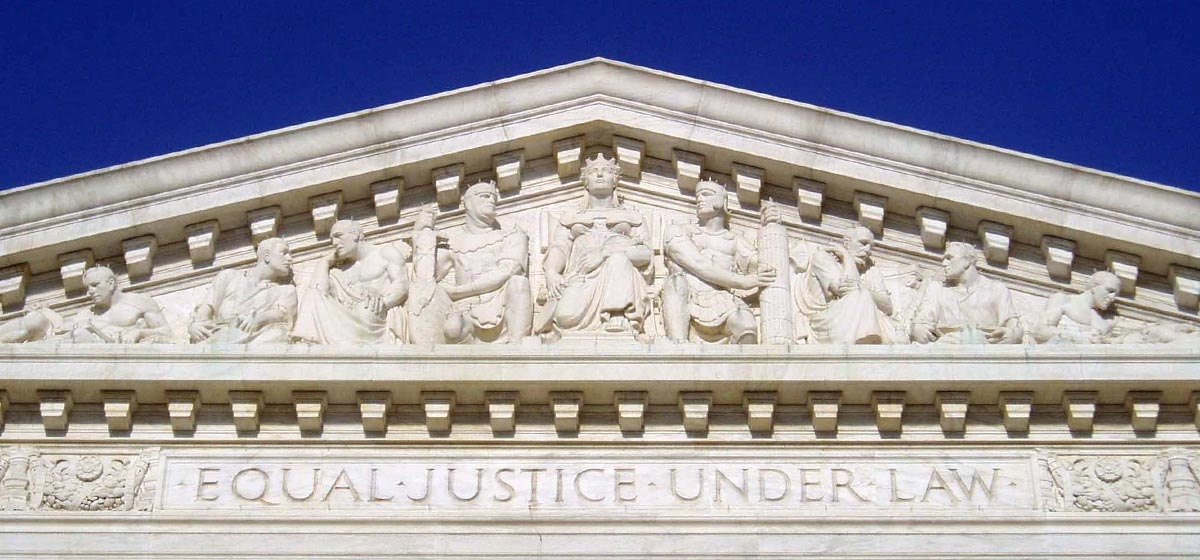When Experts Judge the Experts

In my last post we examined the (pathetic) attempts of Congress to control the tyranny of the experts. Fortunately, Congress isn’t the only weapon in the battle against expert oppression, even at the Federal level. Let’s take a look at the judiciary.
But before we do, let’s pause to savor the delicious irony of what is going on here. Namely, we are asking one group of experts—lawyers and judges—to decide how much deference should be given to another group of experts—Federal regulators. Not to be cynical, but we could take a wild guess and say that the answer would be “a whole lot.” And we would be right.
To get a handle on how extraordinary the deference shown by the courts to experts is, we have to reach back all the way to 1803 and the momentous case of Marbury v. Madison. Article III of the U.S. Constitution, which had come into effect 14 years earlier, had addressed the powers of the courts and established the Supreme Court, but the Article was conspicuously silent on the power those courts could exercise.
In Marbury, as every law student knows, Chief Justice Marshall announced that the Federal courts had the ultimate power to determine whether a law made by Congress was constitutional, and whether an act of the President was legal or illegal, or even unconstitutional. Marshall’s decision made it abundantly clear that the courts were a third branch of the government, co-equal to the executive and legislative branches and, when push came to shove, more equal. (Brilliantly, Marshal didn’t actually order President Madison to do anything, which might have raised the delicate question of how the Court was going to enforce its decision. Instead, the Court held that while Madison was obligated to obey the law, the law he was ignoring was unconstitutional.)
For the next 181 years, the U.S. Federal courts didn’t defer to anybody, even though the President and members of Congress were elected by the people, while the judges were merely appointed to their positions. But all this changed in 1984—the perfect year for it to happen—in the case of Chevron v. NRDC.
The Chevron case arose—more irony—not because a Federal agency (in this case the EPA) was trying to impose more restrictions on people, corporations or states, as is usually the case. Instead, the EPA, under Reagan, was trying to ease a restriction that had been imposed by the same EPA under Carter. This enraged environmentalists, who sued the EPA.
The D.C. Circuit (then-Judge Ruth Bader Ginsberg writing for the majority) agreed with the NRDC and set aside the EPA decision to ease the regulation. The U.S. Supreme Court overruled the D.C. Circuit, upholding the EPA’s decision. The Court held that, if the Congressional statute is silent or unclear, the only issue is whether the regulator’s action was based on a “permissible” construction of the law. If so, the courts will defer to the agency.
Did the Court really believe that experts were so infallible that their decisions should be accorded such great deference (unlike, for example, the decisions of Congress and the President)? Or did the Court, being stuffed with experts, simply stick up for their fellow experts in a brazen act of comradeship? Or did the Court merely look at the vast number of regulations being promulgated and throw up their hands in surrender?
No one knows, but subsequent court decisions have fleshed out the Chevron deference, so that, today, this is probably a fair statement of where the law stands: deference will be given to agency actions in virtually every instance if the actions don’t address issues of “deep economic and political significance.” Only when the actions do affect such issues will the courts step in and impose their own outcomes by looking to the purpose of the law, rather than simply granting Chevron deference to the experts.
Since 99.9 percent of all Federal regulatory actions don’t address issues of “deep economic and political significance,” regulators are, obviously, given a huge pass. The mere fact that experts are able to dictate every detail of every action of our lives seems to have bothered the Supremes not at all.
We would, therefore, have to despair of any hope on the judicial front—not surprising, given that experts are evaluating experts—except for one very small break in the heavy cloudbank of expert oppression: many Justices have finally expressed reservations about Chevron. And, interestingly, these Justices don’t break down along the usual liberal-conservative lines.
Before he died, Justice Scalia was on record as wanting to rethink Chevron. Justices Breyer and Stevens have opined in writing that regulators should not be deferred to on issues of statutory interpretation. Justice Kennedy has suggested that Chevron deference should apply only when an agency possesses some sort of special expertise. Justices Roberts and Thomas clearly believe that Chevron should be reviewed. Finally, Neil Gorsuch, the newest Justice, has long argued that Chevron should be reconsidered.
Of course, whether the Supreme Court will reconsider Chevron, much less overrule or seriously limit its application, is unknowable. For now we simply have to assume that, when it comes to reigning in experts, the courts are no better—and possibly worse—than Congress.
But before we leave on that unhappy note, let’s pause to savor one final irony. In Chevron, the NRDC (National Resources Defense Council) had originally sued the EPA Administrator over the decision to ease the regulations at issue. But that Administrator had resigned before the case reached the Supreme Court, and when the EPA lost at the circuit court level Chevron appealed. As a result, the case came before the Court as Chevron v. NRDC.
If the Administrator had not resigned, the Supreme Court case would have had the same name it had before the D.C. Circuit Court: NRDC v. Gorsuch. Yes, the EPA Administrator whose actions were upheld in an opinion opposed by Justice Gorsuch was none other than Gorsuch’s mother, Anne.
Next up: DP&TE, Part XI





